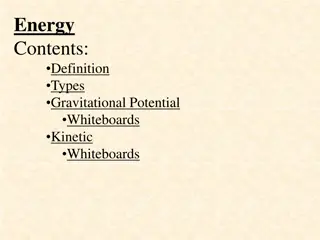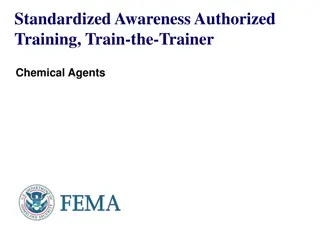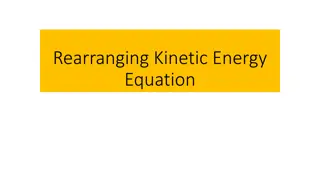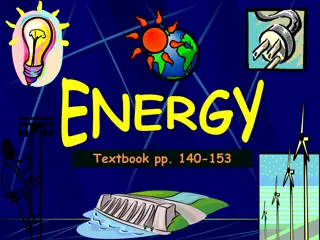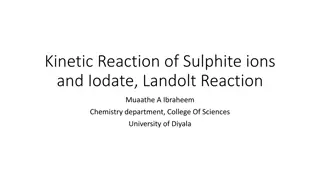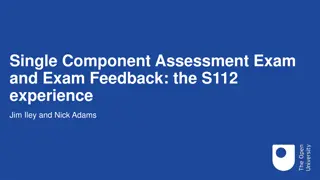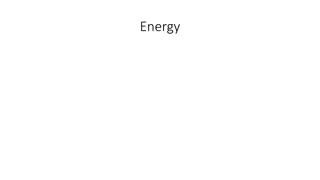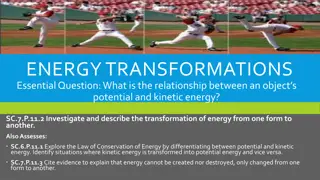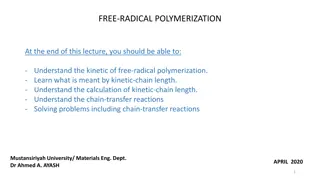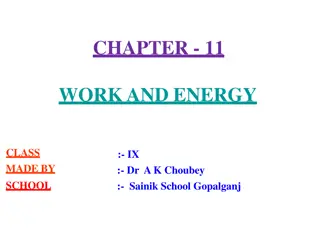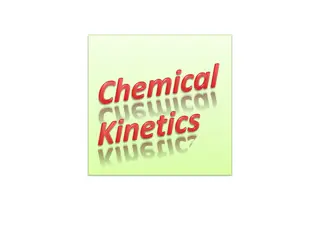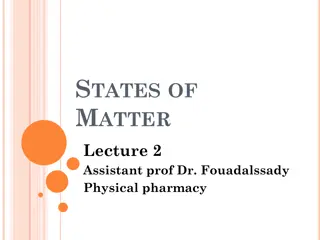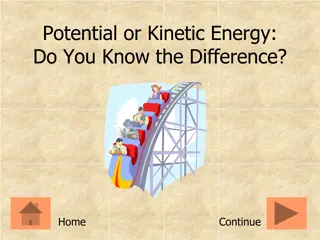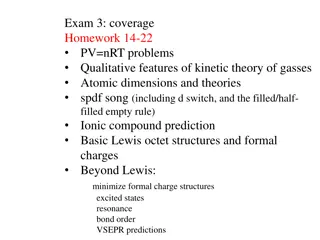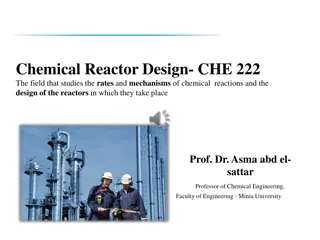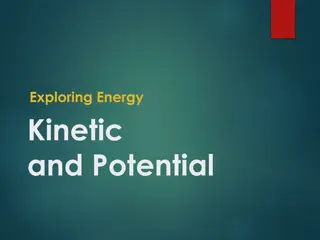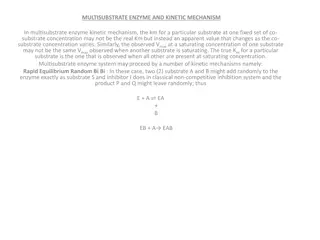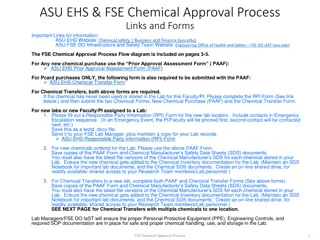
Chemical Kinetics
Learn about the difference between reaction rate and reaction constant, as well as the concepts of molecularity, order of a reaction, and the mechanism of chemical reactions. Explore how the number of reacting species impacts the molecularity of a reaction. Discover the classification of chemical reactions based on molecularity and understand the complex nature of chemical reactions occurring in a series of elementary steps.
Download Presentation

Please find below an Image/Link to download the presentation.
The content on the website is provided AS IS for your information and personal use only. It may not be sold, licensed, or shared on other websites without obtaining consent from the author. If you encounter any issues during the download, it is possible that the publisher has removed the file from their server.
You are allowed to download the files provided on this website for personal or commercial use, subject to the condition that they are used lawfully. All files are the property of their respective owners.
The content on the website is provided AS IS for your information and personal use only. It may not be sold, licensed, or shared on other websites without obtaining consent from the author.
E N D
Presentation Transcript
Difference between reaction rate and reaction constant. Molecularity of a reaction Order of a reaction Difference between molecularity and order 2
Reaction Reaction Rate Rate Reaction constant is is proportionality the the each Its molar reactants the Reaction rate constant a a proportionality an the rate the molar each reactant Its value molar reactants and the temperature rate It It is is the concentration unit the change concentration of unit time change in of reactants in the reactants per the molar molar per It It constant an is is equal the reaction molar concentration reactant is is unity value is is independent concentration and depends temperature. . constant of to of equal to when time rate of of the reaction when concentration of unity independent of concentration depends upon of Its depends concentration at Its value depends concentration of at that value at any instant upon of the time. . at any upon instant of the the reactants of time molar reactants time molar of the the of upon the of that time Its time Its units time- -1 1 units are are always always mol mol L L- -1 1 The depend reaction order The units depend upon reaction and order of units of upon the and also of reaction of rate the nature also upon reaction. . rate constant nature of upon the constant of the the the 3
The number of reacting species taking part in an elementary reaction, which must collide simultaneously to bring about a chemical reaction is called molecularity Molecularity is a theoretical concept. Molecularity cannot be zero, negative, infinite and imaginery. Molecularity cannot be greater than three because more than three molecules may not mutually collide with each other effectively. molecularity of a reaction. 4
CHEMICAL REACTION CHEMICAL REACTION MOLECULARITY MOLECULARITY UNIMOLECULAR PCl 5 5 PCl PCl PCl3 + Cl + Cl2 2 3 BIMOLECULAR 2HI 2HI H H2 2 + I + I2 2 TRIMOLECULAR 2SO 2SO2 2 + O + O2 2SO 2SO3 3 2 BIMOLECULAR NO + O NO + O3 3 NO NO2 2 + 0 + 02 2 TRIMOLECULAR 2CO + O 2CO + O2 2 2CO 2CO2 2 TRIMOLECULAR 2FeCl 2FeCl3 3 + SnCl + SnCl4 4 2FeCl SnCl SnCl2 2 + + 2FeCl2 2 5
Most chemical reactions are complex reactions. These occur in a series of steps. Each step is an elementary step. The stepwise sequence of the elementary reactions that convert reactants to the products is called the mechanism of the reaction. Some of the steps will be fast and some will be slow. The slowest step is the rate determining step rate determining step. 6
The different elementary steps of the reaction are as follows: HBr + O2 HOOBr Molecularity = 2 HOOBr + HBr 2HBrO Molecularity = 2 HBr + HBrO H2O + Br2 ] X2 Molecularity = 2 ------------------------------------------- 4HBr +O2 2H2O + Br2 ------------------------------------------- 7
The sum of powers of the concentration of the reactants in the rate law expression is called the order of that chemical reaction. Let us consider a reaction : aA + b B cC + dD Rate = k[A]x [B]y The order of reaction with respect to A = x The order of reaction with respect to B = y The overall order of the reaction is (x+ y) 8
REACTION REACTION RATE RATE LAW LAW ORDER ORDER 2NO(g) +02(g) 2N02(g) Rate = k[NO]2[02] Rate = k[NO]2[H2] Rate = k[ICI]2[H2] Rate = k[N2O5] 3 3 2NO(g) + 2H2(g) 2N2(g) 2H2O(g) 2ICI(g) + H2(g) 2HCI(g) + I2(g) 2N205(g) 4NO2(g) + O2(g) 3 1 Rate = k[NO2][F2] Rate = k[H2O2] 2 2NO2(g) + F2(g) 2NO2F(g) 1 2H2O2(aq) 2H2O(l) + 02(g) Rate = k[H2][Br2] 3/2 H2(g) + Br2(g) 2HBr(g) 9
For a reaction, A + B product; the rate law is given by, r = k[A]1/2[B]2. What is the order of the reaction? 10
Solution. The reaction, X Y, follows second order kinetics hence the rate law equation will be Rate = kC2, where C = [X] If concentration of X increases three times, now, Rate = k(3C)2= 9kC2 Thus the rate of reaction will become 9 times. Hence, the rate of formation of Y will increase 9 times. [X] = 3C mol L-1 11
Rate of the reaction r = k[A]n --------(i) from the given data (27r) = k[3A]n --- (ii) Divide eqn (ii) by eqn (i) = r k[A] 27 = [3]n 33 = [3]n n = 3 ( the order of the reaction is 3) = (27r) (27r) = r k[A]n n = k[3A] k[3A]n n 12

